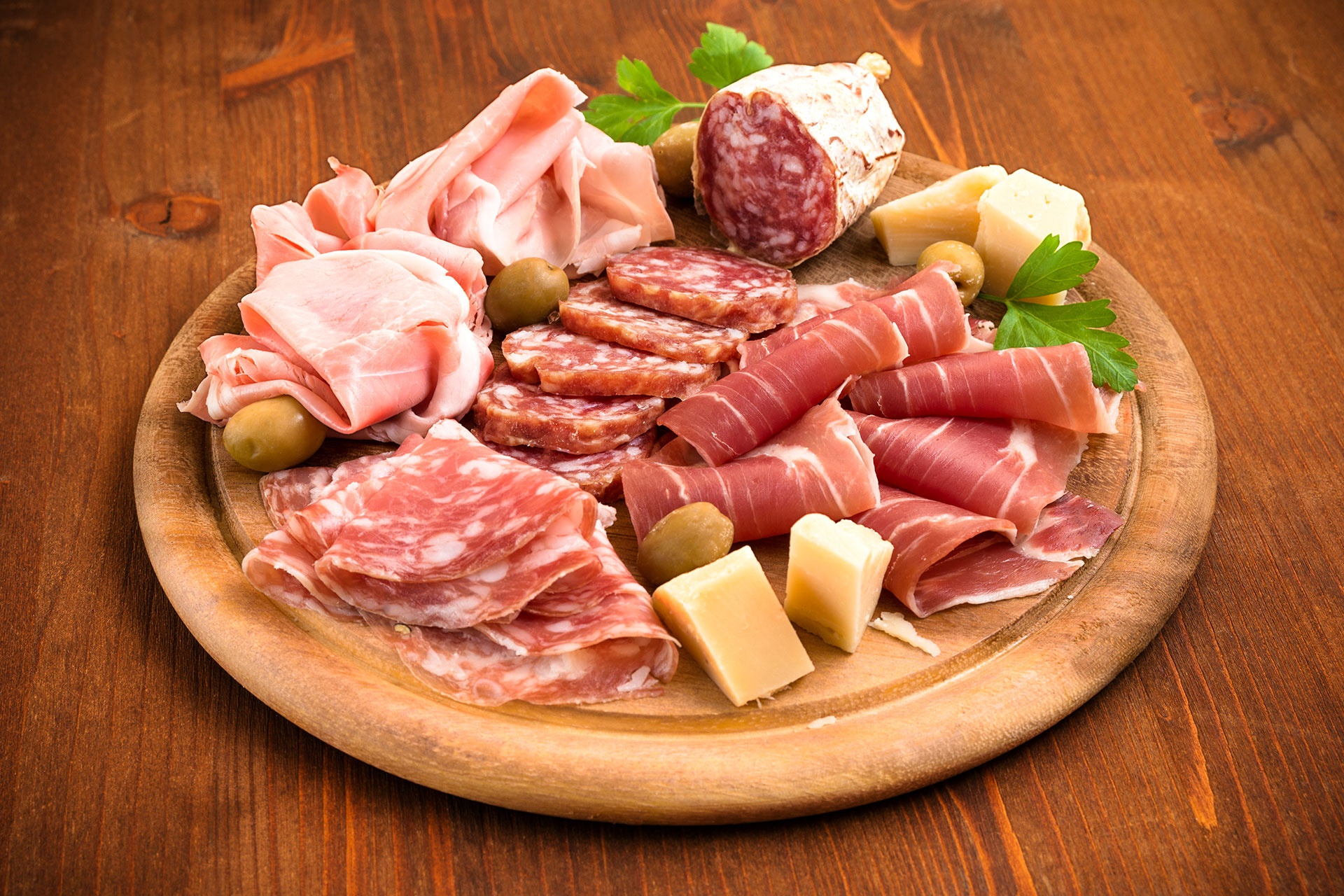From oil to spelt, from sheep cheese to small cacciatore style salami, the region of Umbria, also known and appreciated for its excellent food and wine, boasts a long series of truly exceptional traditional products some of which are PDO and PGI: here Is a presentation of them and their main characteristics.
Umbria PDO and PGI products
The products of Protected Destination of Origin of Umbria are:
- extra virgin olive oil of Umbria
- spelt of Monteleone di Spoleto
- Tuscan sheep cheese
- Italian cacciatore-style salami
The products of Protected Geographical Indication of Umbria are:
- prosciutto di Norcia (cured ham)
- lentils of Castelluccio di Norcia
- white veal of the central Apennines
- red potato of Colfiorito
- lamb of central Italy
Let’s begin with Umbrian extra virgin olive oil that enhances every dish with its bold flavour. Umbria proudly holds PDO recognition across the entire region, which is subdivided into five areas: Colli Assisi Spoleto, Colli Martani, Colli Amerini, Colli Orvietani, Colli del Trasimeno. The main olive varieties in the region are Moraiolo, Frantoio, Leccino, San Felice, Rajo and Dolce Agogia.
Spelt of Monteleone di Spoleto is very ancient and appreciated. It is associated with the Patron Saint of Monteleone di Spoleto, San Nicola di Bari who, passing through Umbria, noted the poverty of the inhabitants of the small town and tried to aid them by distributing the spelt he had with him. Although he did not have enough for everyone, the spelt that he donated fed the town’s population: an event that is celebrated every year with a feast on December 5. The spelt of Monteleone di Spoleto has special characteristics which includes the vitreous consistency of the grain that distinguishes it from the other varieties. It is used for stews and soups and is an essential ingredient of local traditional dishes such as ‘imbrecciata’ (pulse soup) and Valnerina style polenta (cornmeal.
Tuscan sheep cheese is made according to a very ancient tradition that dates back to the Roman era. In 1400 it as called “cacio marzolino” (March cheese) after the production period that began in March and lasted throughout the entire spring. It can be short, medium or long aged, giving it semi-hard or hard consistency.
Cacciatore style salami, especially prosciutto di Norcia are just one of the types of Umbrian charcuterie with its intense and unmistakeable flavour, certainly deserves trying.
The lentil of Castelluccio has a very unique flavour because if its size – which is very tiny – and its soft consistency and thin skin.
White veal of the Central Apennines is produced from male and female cattle, Chianina, Marchigiana or Romagnola breed, between 12 and 24 months old. This meat is high quality in terms of its consistency and its flavour, also in reference to its nutritional characteristics.
The red potato of Colfiorito belongs to the Dutch variety called Dèsiré, it has a thin, matte, red skin and light yellow pulp. The consistency is compact and holds well during cooking and is therefore ideal for making gnocchi, for roasting on the fire and for desserts.
Lastly, lamb of central Italy. Choosing meat with this PGI recognition also means that you are choosing a fine product: tasty, tender, easily digestible, it is particularly suitable for weaning infants, but also for the elderly.











Follow us on the socials